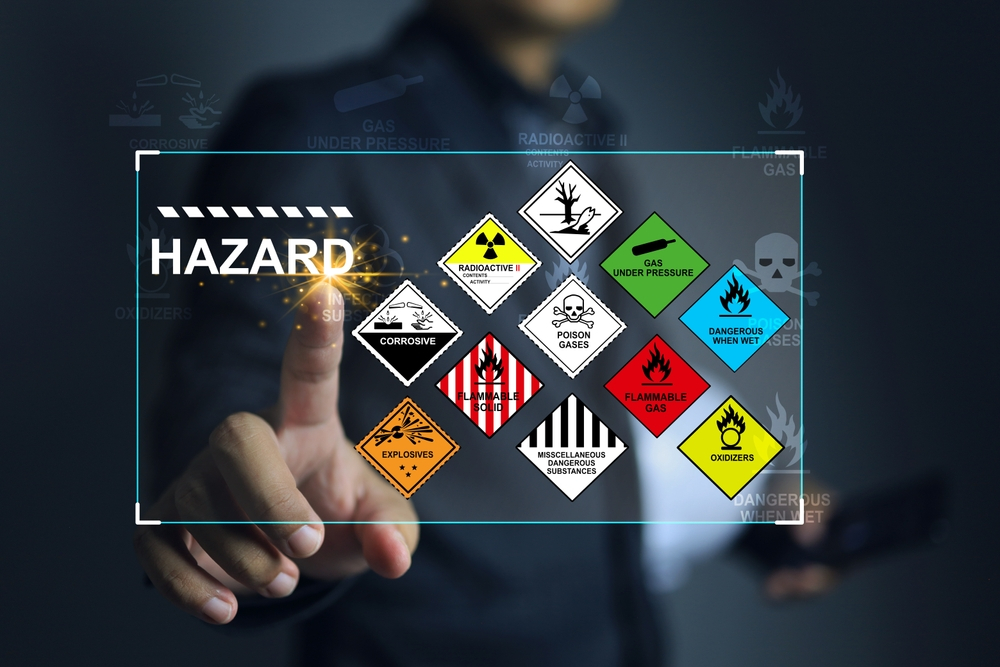The 8-Second Trick For Roar Solutions
The 8-Second Trick For Roar Solutions
Blog Article
Everything about Roar Solutions
Table of ContentsNot known Factual Statements About Roar Solutions Roar Solutions Things To Know Before You BuyThe Best Strategy To Use For Roar Solutions
In order to shield installments from a possible surge an approach of analysing and identifying a possibly unsafe location is required. The purpose of this is to make certain the right selection and setup of tools to ultimately prevent an explosion and to guarantee safety of life.
(https://www.figma.com/design/4A7baTVvle9Yit65rIBitI/Untitled?node-id=0-1&t=PKjLsk7ODuPV6hjT-1)
No equipment needs to be installed where the surface temperature of the tools is higher than the ignition temperature level of the provided risk. Below are some common dust unsafe and their minimal ignition temperature level. Coal Dirt 380C 225C Polythene 420C (thaws) Methyl Cellulose 420C 320C Starch 460C 435C Flour 490C 340C Sugar 490C 460C Grain Dirt 510C 300C Phenolic Resin 530C > 450C Aluminium 590C > 450C PVC 700C > 450C Soot 810C 570C The possibility of the danger being present in a focus high enough to cause an ignition will certainly vary from location to place.
In order to classify this danger a setup is split into locations of danger relying on the amount of time the unsafe exists. These areas are described as Areas. For gases and vapours and dirts and fibres there are 3 areas. Area 0 Zone 20 An unsafe environment is very likely to be present and might be existing for extended periods of time (> 1000 hours annually) and even constantly Zone 1 Zone 21 A harmful ambience is feasible however not likely to be existing for lengthy durations of time (> 10 450 C [842 F] A classification of T6 implies the minimum ignition temperature is > 85 C [185 F] Hazardous location electric tools maybe designed for use in greater ambient temperature levels. This would certainly showed on the ranking plate e.g. EExe II C T3 Ta + 60C( This indicates at 60C ambient T3 will certainly not be surpassed) T1 T1, T2, T3, T4, T5, T6 T2 T2, T3, T4, T5, T6 T3 T3, T4, T5, T6 T4 T4, T5, T6 T5 T5, T6 T6 T6 A T Class rating of T1 means the optimum surface area temperature generated by the tool at 40 C is 450 C. Thinking the linked T Course and Temperature level score for the tools are suitable for the area, you can constantly utilize a tool with a more rigid Division score than needed for the location. There isn't a clear solution to this question. It actually does depend on the kind of equipment and what repair work require to be brought out. Equipment with certain test treatments that can't be carried out in the field in order to achieve/maintain 3rd party score. Should come back to the manufacturing facility if it is prior to the devices's solution. Area Repair Service By Authorised Worker: Complicated screening may not be needed nevertheless certain procedures may need to be complied with in order for the equipment to preserve see here its third event score. Authorized workers must be used to do the work properly Repair work need to be a like for like replacement. New part need to be considered as a direct substitute calling for no special testing of the equipment after the repair is full. Each tool with a hazardous score need to be assessed individually. These are described at a high degree below, however, for even more in-depth details, please refer straight to the guidelines.
Excitement About Roar Solutions
The devices register is a comprehensive data source of equipment records that consists of a minimum collection of fields to recognize each thing's location, technological parameters, Ex lover classification, age, and environmental information. The ratio of In-depth to Close evaluations will be identified by the Equipment Threat, which is examined based on ignition risk (the possibility of a source of ignition versus the possibility of a flammable atmosphere )and the hazardous area category
( Zone 0, 1, or 2). Carrying out a durable Risk-Based Evaluation( RBI )technique is vital for guaranteeing conformity and security in handling Electrical Devices in Hazardous Locations( EEHA).
Top Guidelines Of Roar Solutions

In regards to eruptive danger, an unsafe area is an atmosphere in which an explosive ambience is existing (or might be anticipated to be existing) in amounts that need special precautions for the building and construction, setup and use tools. eeha certificate. In this article we discover the difficulties faced in the office, the risk control actions, and the needed competencies to function safely
It is a consequence of modern life that we make, keep or manage a series of gases or fluids that are regarded flammable, and a variety of dusts that are considered flammable. These substances can, in certain problems, develop eruptive atmospheres and these can have significant and heartbreaking consequences. Many of us know with the fire triangle get rid of any one of the 3 elements and the fire can not happen, but what does this mean in the context of harmful areas? When damaging this down into its easiest terms it is essentially: a combination of a certain quantity of release or leakage of a certain material or material, mixing with ambient oxygen, and the presence of a resource of ignition.
In a lot of circumstances, we can do little concerning the levels of oxygen in the air, however we can have substantial impact on sources of ignition, as an example electric equipment. Unsafe areas are recorded on the harmful area category illustration and are recognized on-site by the triangular "EX-SPOUSE" indicator. Below, among other vital details, areas are split into three types depending on the danger, the chance and period that an eruptive environment will exist; Zone 0 or 20 is deemed one of the most hazardous and Area 2 or 22 is regarded the least.
Report this page